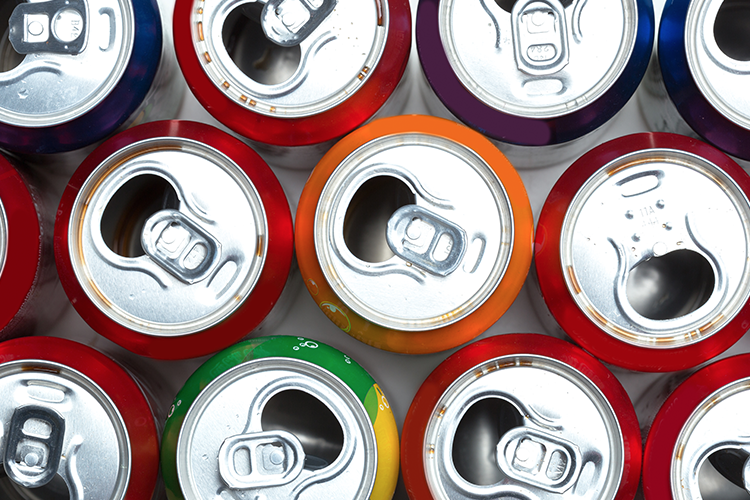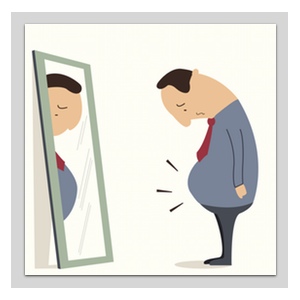Blog
Sugary drinks and visceral fat
 Visceral fat – if you haven’t heard of it before now, let us provide you a brief education as to its nastiness.
Visceral fat – if you haven’t heard of it before now, let us provide you a brief education as to its nastiness.
Compared with subcutaneous fat, which can be all over the body, it accumulates at the abdomen, can be unseen, and is dangerous. Visceral fat fills the space between your organs like the liver, kidneys, pancreas and intestine, cramping their style.
And you don’t need to be overweight to hold onto this organ-wrapping fat.
Whilst a tyre of chub around the belly is a sign of the deep visceral fat, there is a phenomenon where people holding onto visceral fat can be thin on the outside, fat on the inside (a.k.a. TOFI or skinny fat).
Visceral fat impacts immune and hormone function, messing with weight, brain function, heart health, mood, and can lead to type 2 diabetes. It secretes retinol-binding protein 4 (RBP4), thought to cause insulin resistance through increased inflammation.1-2
And what you eat can lead to visceral fat accumulation. Too much of the sugary sweet stuff or heavily refined and processed carbohydrates can lead to excess fat storage, as insulin works hard to keep excess glucose out of the bloodstream. And some of this is stored as visceral fat.
So it may not come as a surprise that research has linked high consumption of sugar-sweetened beverages to the development of visceral fat.

Soft drinking to a big belly
Using data from the ongoing Framingham study, it has been found that middle-aged folk enjoying a soft drink a day had increased amount of visceral fat.3
1,003 participants were involved, with dietary data gathered at baseline and at a six-year follow-up. This included beverages high in sucrose and high fructose corn-syrup, like fruit juice, and carbonated and non-carbonated drinks with added sugars.
Researchers found independent of participant’s age, gender, physical activity, body mass index and other factors, visceral fat volume increased by:
- 658 cm cubed for non-drinkers;
- 649 cm cubed for occasional drinkers (1-4 per month)
- 707 cm cubed for frequent drinkers (1-6 per week)
- 852 cm cubed for those who drank one beverage daily.
Excess added sugar – particularly fructose – leads to excess fat storage and insulin resistance, and as visceral fat is considered an ‘organ’ on its own due its influence over hormone function and inflammation, it ain’t great to have.
Best way to deal with it?
Our bodies are unique and complex, so tackling the visceral fat may require various approaches. Here are factors to consider when addressing increased abdominal fat:
- Managing stress – chronic cortisol production encourages fat storage, particularly around the abdomen where there are more cortisol receptors.4-6
- Exercising regularly – some movement daily over nothing at all has been shown to reduce accumulation of visceral fat. If you aren’t moving much, start with at least a 2-3km walk each day. And know that the more you do, and the more intense you exercise, the less likely it is that visceral fat will accumulate.7-9
- Getting enough sleep – in adults, less than 6 hours or more than 9 hours a day of snooze time has been correlated with more of the tummy fat; whereas 7-8 hours may result in accumulating less.10-11
Importantly, quit the sugary drinks, limit added sugars and heavily refined and processed carbohydrates, and attempt to eat real, whole foods a majority of the time.
By Angela Johnson (BHSc Nut. Med)
References:
- Batra, A Siegmund, B 2012, ‘The Role of Visceral Fat’, Digestive Diseases, 30, pp. 70-74.
- Norseen, J, Hosooka, T, Hammarstedt, A, Yore, MM, Kant, S, Aryal, P, Kiernan, UA, Phillips, DA, Maruyama, H, Kraus, BJ, Usheva, A, Davis, RJ, Smith, U, & Kahn, BB 2012, ‘Retinol-binding protein 4 inhibits insulin signaling in adipocytes by inducing proinflammatory cytokines in macrophages through a c-Jun N-terminal kinase- and toll-like receptor 4-dependent and retinol-independent mechanism’, Molecular And Cellular Biology, vol. 32, no. 10, pp. 2010-2019.
- Jiantao, M, McKeown, NM, Shih-Jen, H, Hoffmann, U, Jacques, PF, Fox, CS, Ma, J, & Hwang, S 2016, ‘Sugar-Sweetened Beverage Consumption Is Associated With Change of Visceral Adipose Tissue Over 6 Years of Follow-Up’, Circulation, vol. 133, no. 4, pp. 370-377.
- Andrews, R.C., O. Herlihy, D.E.W. Livingstone, et al 2002, ‘Abnormal cortisol metabolism and tissue sensitivity to cortisol in patients with glucose intolerance’, The Journal of Clinical Endocrinology, vol. 87, no. 12, pp. 5587-5593.
- Epel, E.S., B. McEwen, T. Seeman, et al. 2000, ‘Stress and body shape: stress-induced cortisol secretion is consistently greater among women with central fat’, Psychosomatic Medicine, vol. 62, pp. 623-632.
- Wallerius, S., R. Rosmond, T. Ljung, et al 2003, ‘Rise in morning saliva cortisol is associated with abdominal obesity in men: a preliminary report’, Journal of Endocrinology Investigation, 26, pp. 616-619.
- Irving, Brian A. et al. 2008, “Effect of Exercise Training Intensity on Abdominal Visceral Fat and Body Composition.” Medicine and science in sports and exercise, vol. 40, no. 11, pp.1863–1872.
- Slentz, CA, Aiken, LB, Houmard, JA, Bales, CW, Johnson, JL, Tanner, CJ, Duscha, BD, & Kraus, WE 2005, ‘Inactivity, exercise, and visceral fat. STRRIDE: a randomized, controlled study of exercise intensity and amount’, Journal Of Applied Physiology, vol. 99, no. 4, pp. 1613-1618.
- Hairston, KG, Vitolins, MZ, Norris, JM, Anderson, AM, Hanley, AJ, & Wagenknecht, LE 2012, ‘Lifestyle factors and 5-year abdominal fat accumulation in a minority cohort: the IRAS Family Study’, Obesity (Silver Spring, Md.), vol. 20, no. 2, pp. 421-427.
- Chaput, J, Bouchard, C, & Tremblay, A 2014, ‘Change in sleep duration and visceral fat accumulation over 6 years in adults’, Obesity (Silver Spring, Md.), vol. 22, no. 5, pp. E9-E12.
- Hairston, K, Bryer-Ash, M, Norris, J, Haffner, S, Bowden, D, & Wagenknecht, L 2010, ‘Sleep duration and five-year abdominal fat accumulation in a minority cohort: the IRAS family study’, Sleep, vol. 33, no. 3, pp. 289-295.











